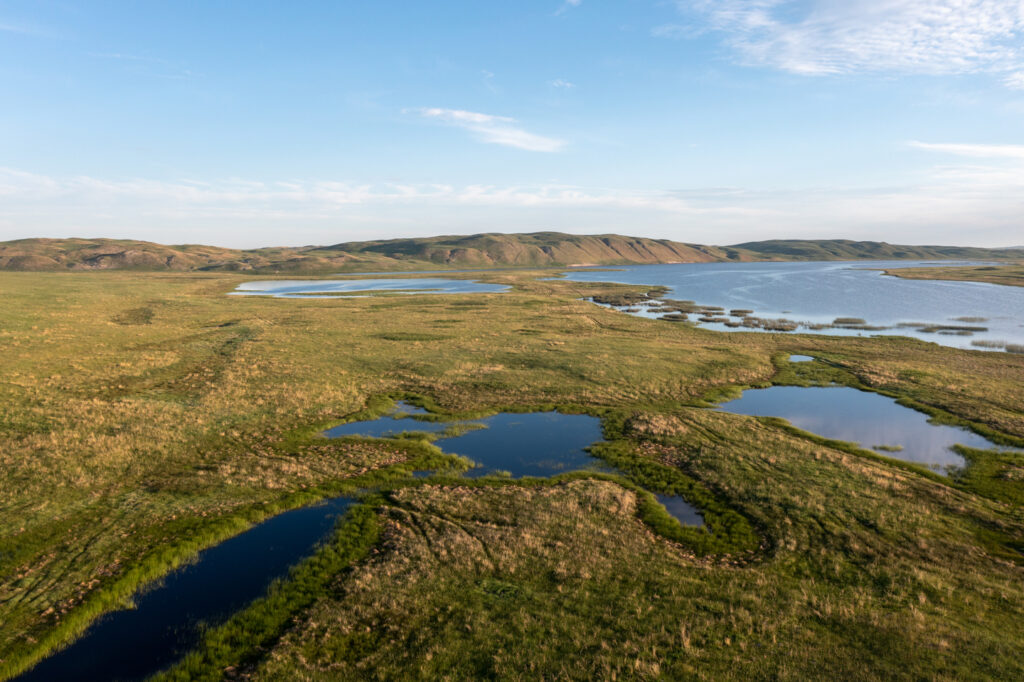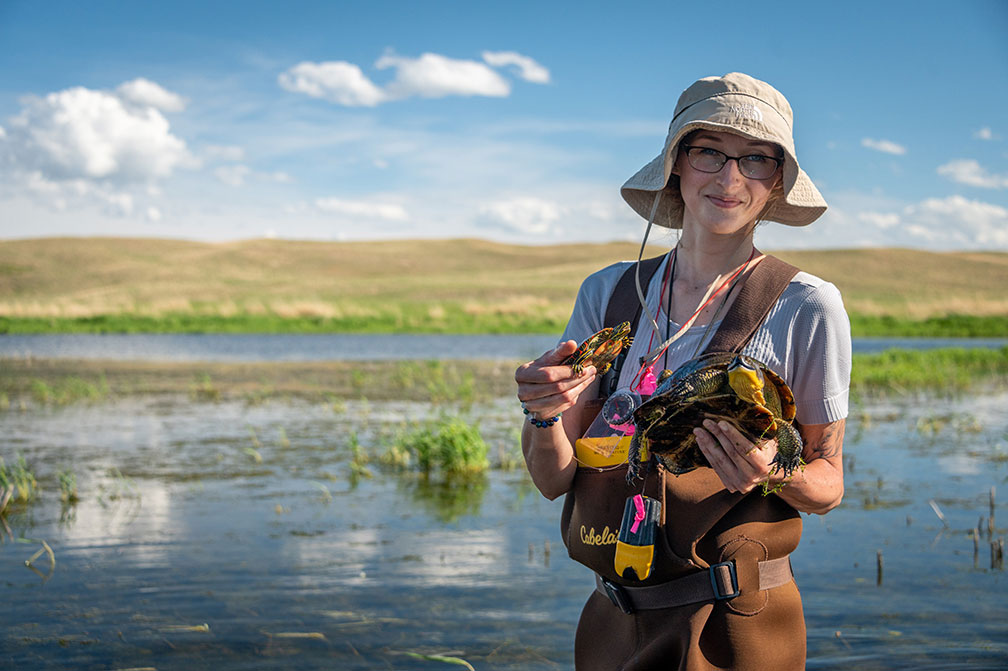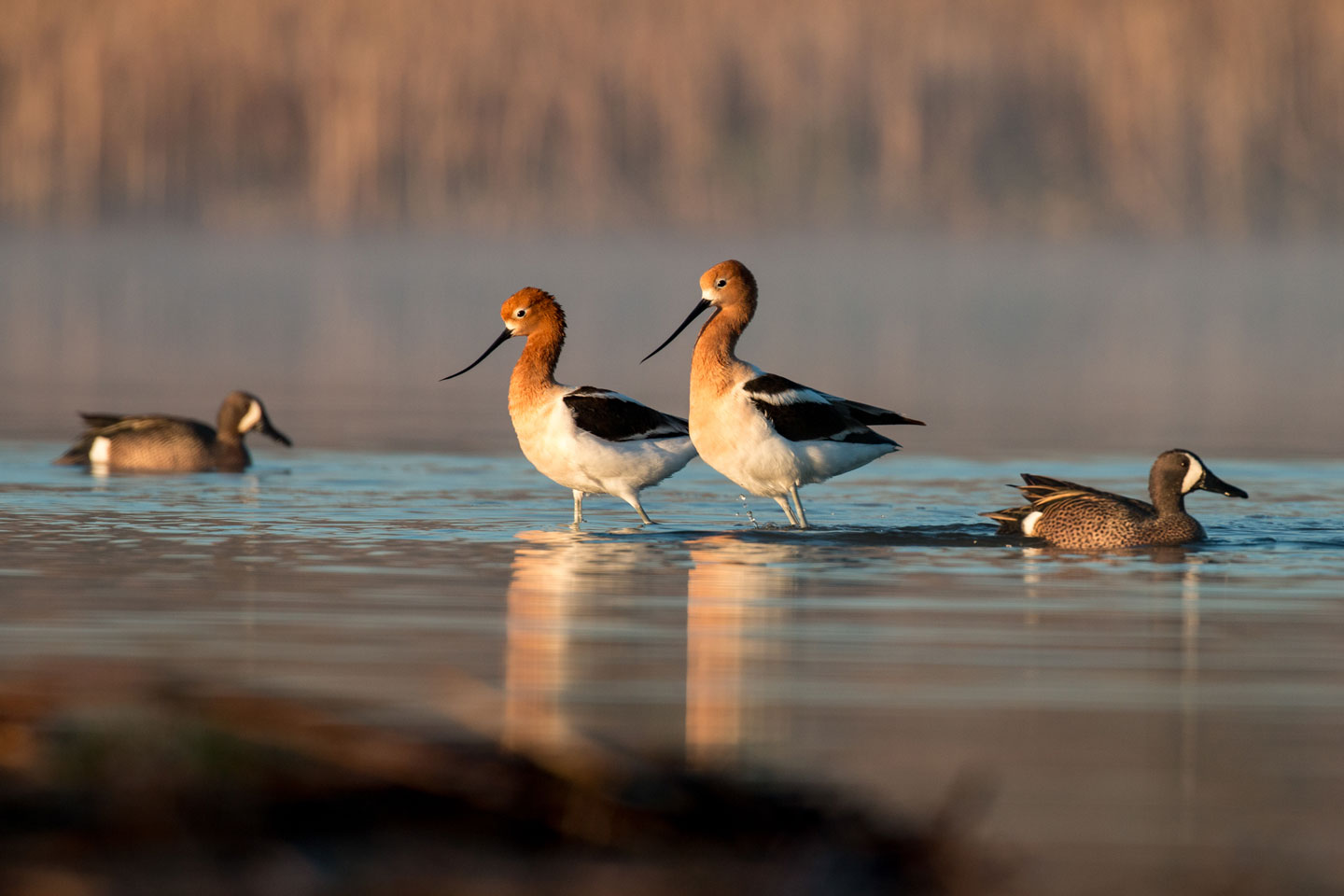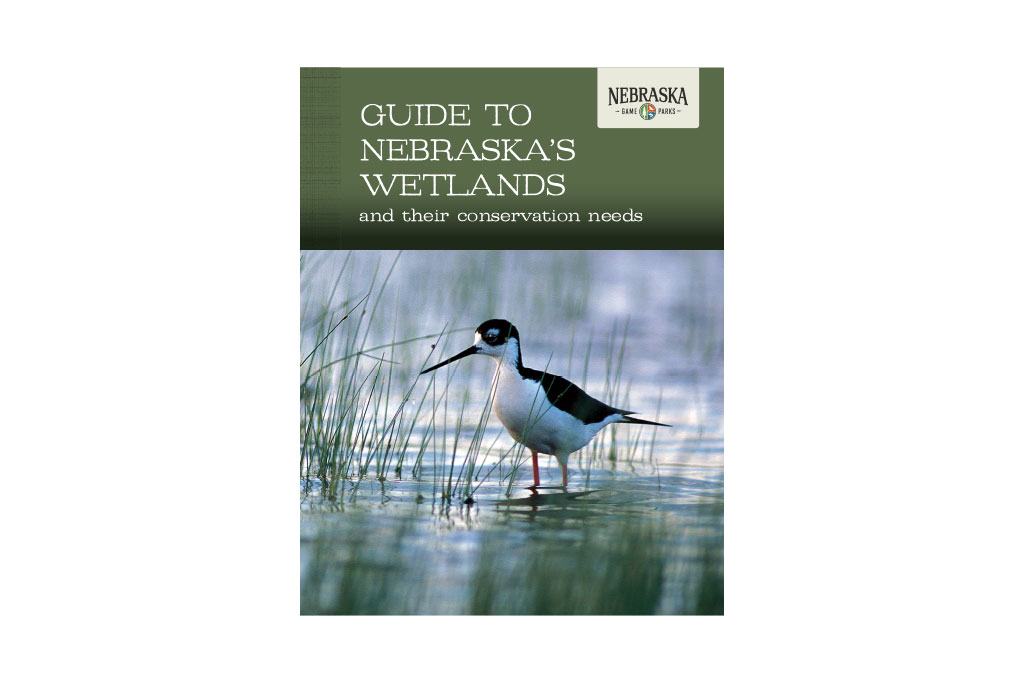Sandhills wetlands
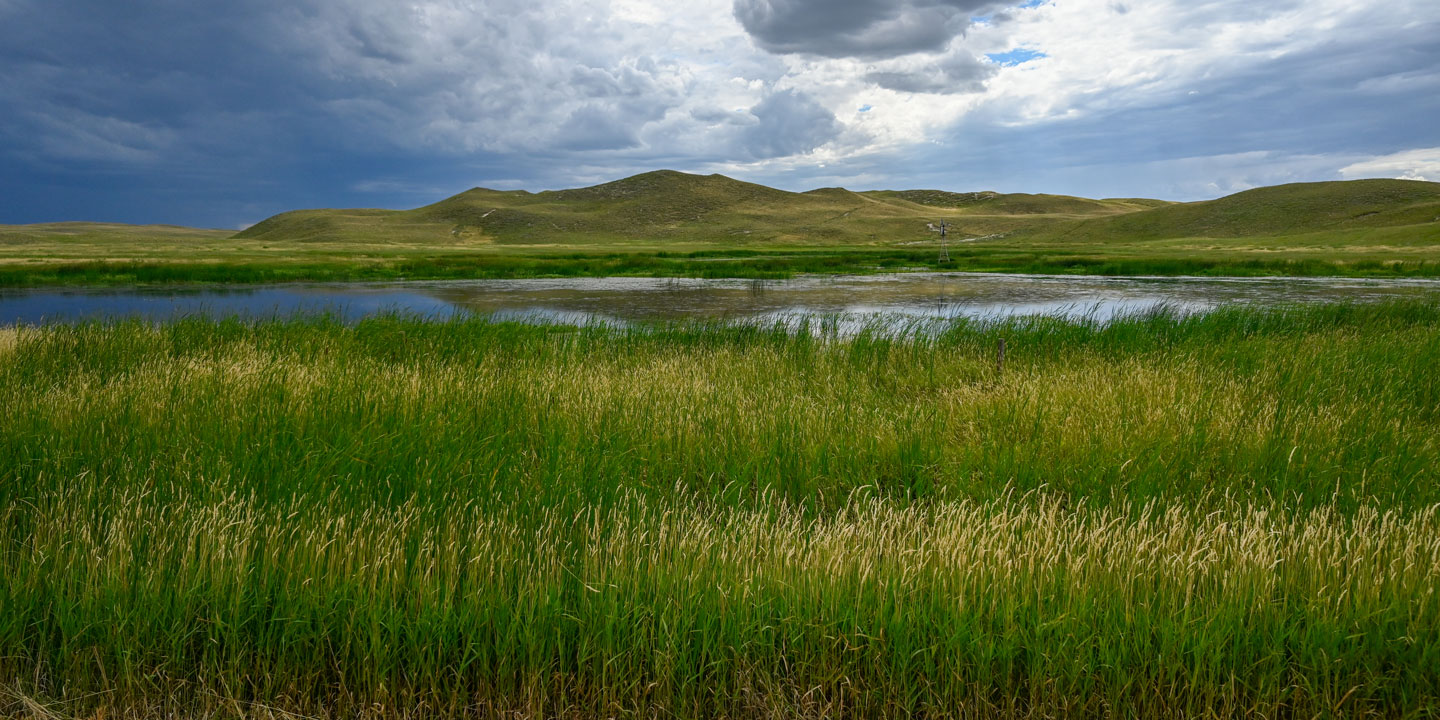
In Nebraska, sandhills wetlands have formed where sandy soils are dominant — in the Sandhills region of Nebraska, along the Loup and Platte river sandhills, and along the Elkhorn and Niobrara rivers. Groundwater fills these wetlands, which include marshes, meadows and fens. While the majority are freshwater, in some locations, they are salty — made so by the alkali there.
Sandhills wetlands are mostly on private ranchland and the ranchers are stewards of the wetlands and grasslands that their cattle rely on. These wetlands provide important habitat for a wide diversity of fish and wildlife species. Some of these wetlands also support state or federally endangered/threatened species, including the whooping crane, western prairie fringed orchid, northern redbelly dace, finescale dace, western blacknose shiner and Topeka shiner.
While sandhills wetlands remain the most intact of Nebraska’s wetland types, they face continued threats from alterations to the watershed and invasive plants. But these wetlands play an extremely valuable role to migratory waterfowl and Blanding’s turtles, provide important habitat, and — in the Sandhills region — support the ranching economy. They also support recreational activities, such as fishing, hunting, wildlife watching, kayaking, camping and boating.
Watch our sandhills wetlands film
Follow Nebraska Game and Parks and the Platte Basin Timelapse crew in learning about Nebraska’s sandhills wetlands. Watch a series of stories about wetlands in the Nebraska Sandhills, the conservation efforts and challenges these wetlands face today, and the species and people who call the Sandhills home.
This documentary was produced in collaboration with the Platte Basin Timelapse project at the University of Nebraska-Lincoln by Mariah Lundgren. Find additional videos, interactive maps, recorded bird sounds, photo galleries of the plants and animals that depend on these wetlands, and a behind-the-scenes look at the making of this documentary in PBT’s Sandhills StoryMap.
Well-known sandhills systems
The Sandhills
Found in northcentral Nebraska, the Sandhills is estimated to be have more than 1 million acres of mostly freshwater wetlands spread out over 19,300 square miles. They include saturated meadows, shallow marshes and the fringes of deeper lakes, rivers and streams, which are fed by groundwater from the Ogallala Aquifer over which the region lies.
The area also is home to several unique wetlands types, including fens and alkaline wetlands. Fens, an uncommon type of wetland, are slightly acidic, are on peat or mucky soils, and provide specialized habitat for rare plant species: cotton grass, buckbean and marsh marigold. In the western part of the Sandhills, highly alkaline wetlands support plants and invertebrates, but are too salty for fish to live.
Wetlands in this region range in size from less than 1 acre to 2,300 acres, and play a role in groundwater discharge and recharge. They are found in all or parts of 11 Biologically Unique Landscapes.
Sandhills wetlands provide important habitat to more than 300 bird species (including 125 water birds), 60 fish species and several species are freshwater mussels, all of which have been documented there. The region is considered important to waterfowl production and is listed as an area of greatest continental significance in North America for ducks, geese and swans.
Due to extensive losses in the past, the region was given a Priority 1 ranking for conservation in the Nebraska Wetlands Priority Plan in 1991.
Landowners in the area, however, are working together to enhance the wetland-grassland ecosystem in a way that sustains profitable private ranching, wildlife and vegetative diversity, and associated water supplies. This Sandhills Task Force, a nonprofit organization and land trust, have completed many wetland projects on ranches over the past 30 years. Learn more about their successes at SandhillsTaskforce.org.
Loup/Platte River Sandhills
The Loup/Platte River Sandhills wetland system is in a narrow band of wind-deposited sand extending from the confluence of the Platte and Loup rivers at Columbus, west to near the town of Ravenna. Numerous freshwater wetlands are found within these sandhills.
These wetlands are mostly less than 5 acres in size, and flood temporarily or semi-permanently.
These wetlands provide good habitat for nesting waterfowl, provide recreation for waterfowl hunters, and provide water and forage for area livestock.
More of these wetlands remain intact than wetlands in Nebraska’s other complexes. Local groundwater pumping, which could cause the wetlands to lose their water source, is the biggest threat to those that remain.


